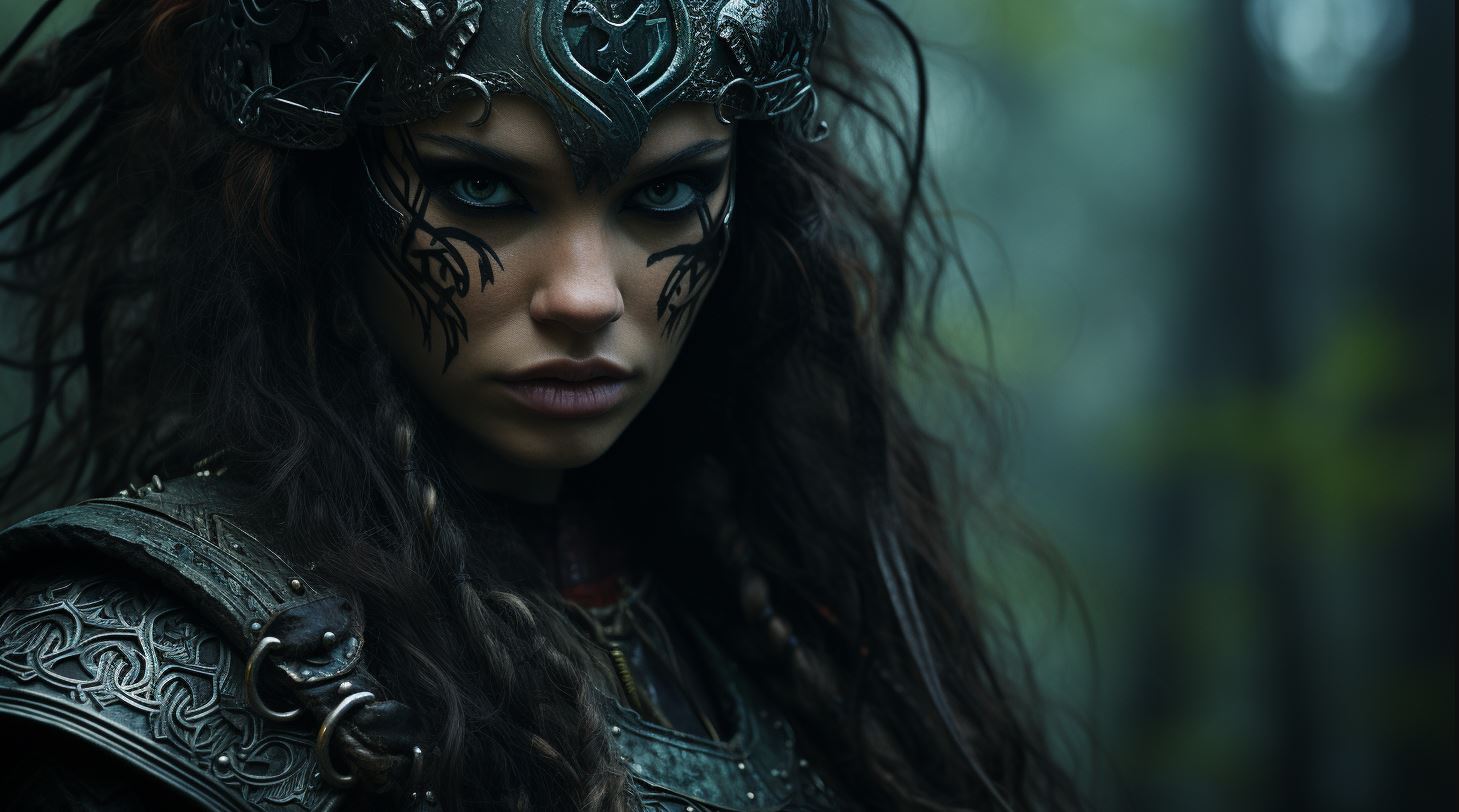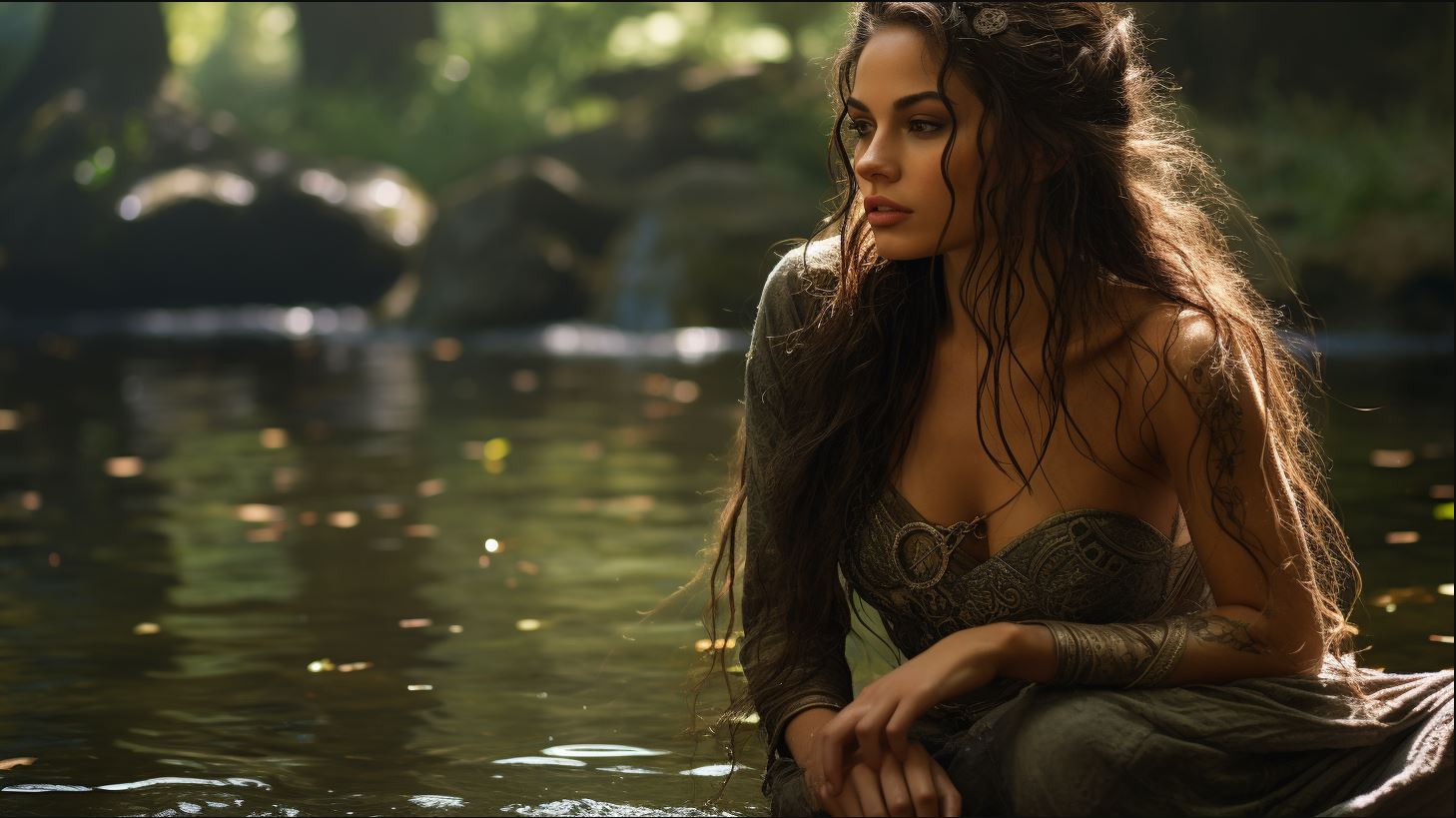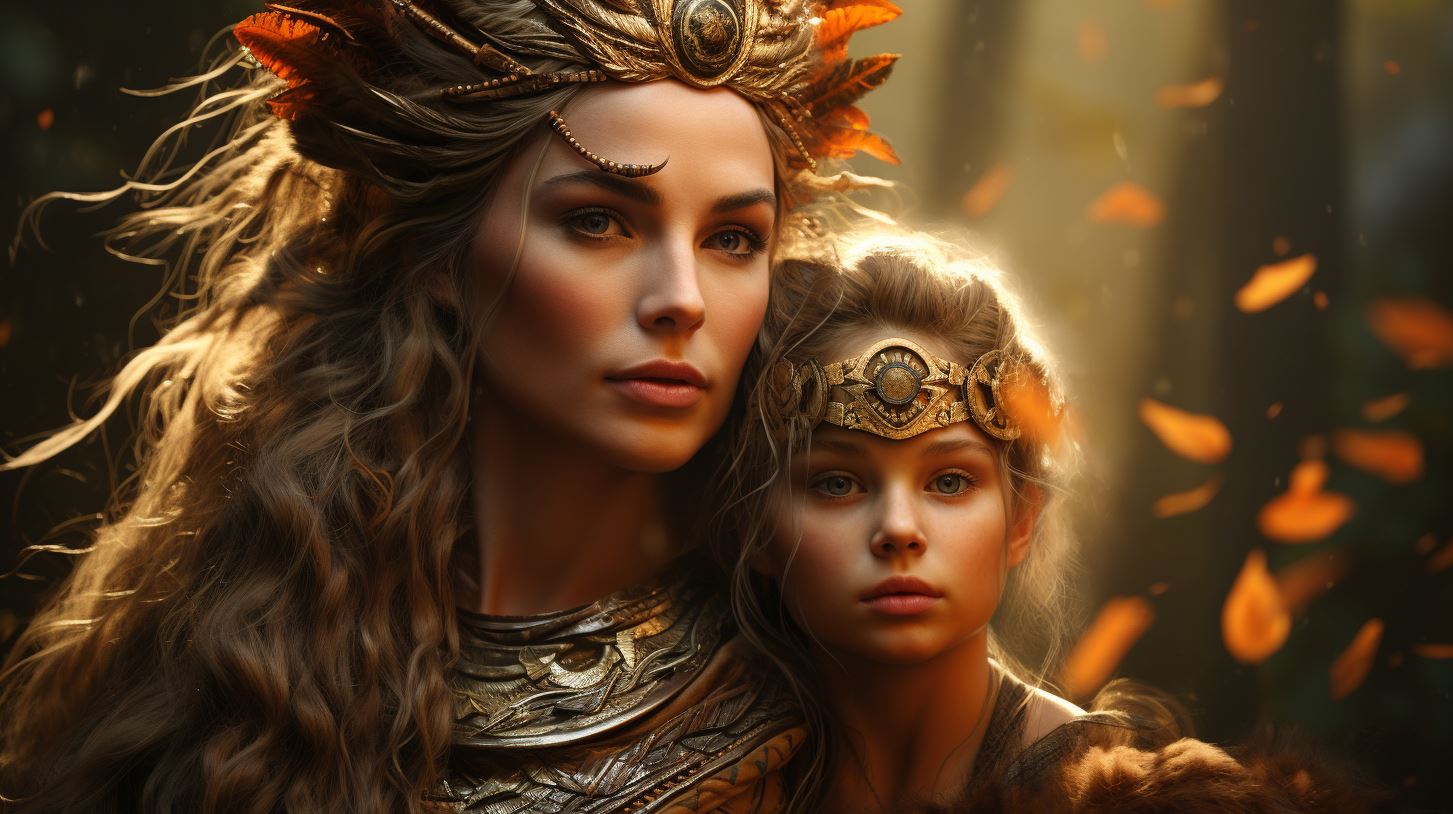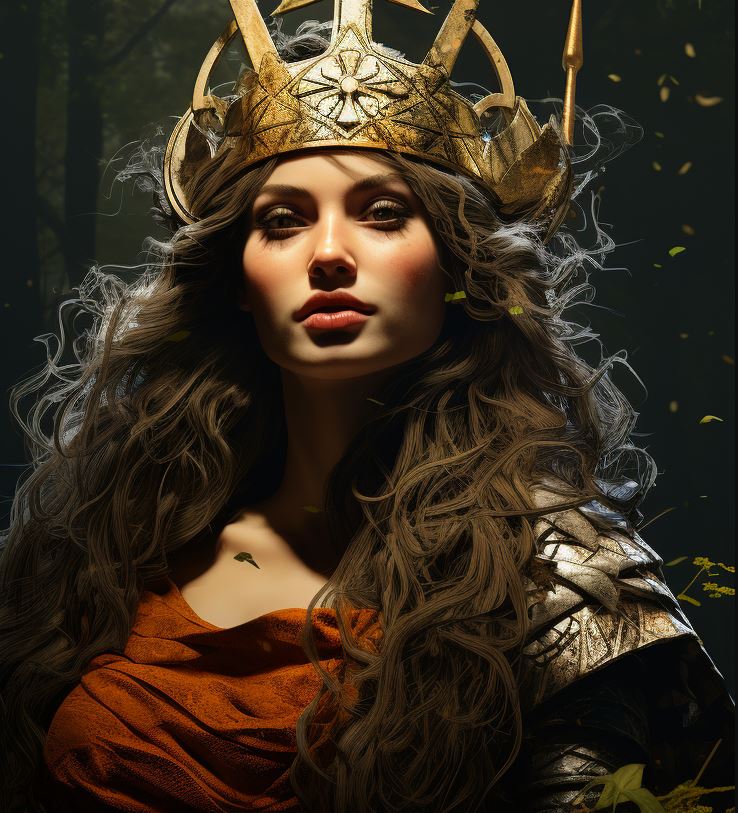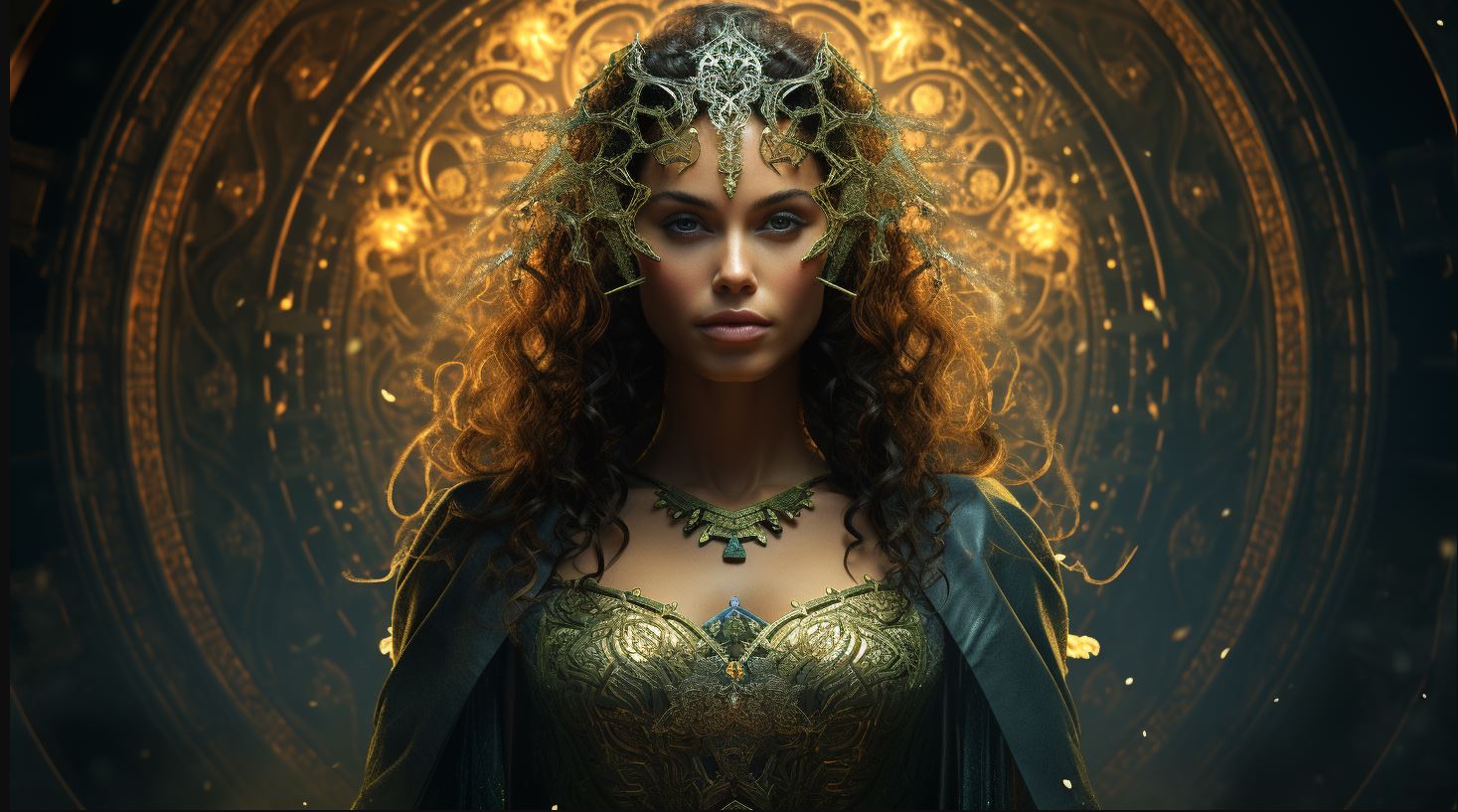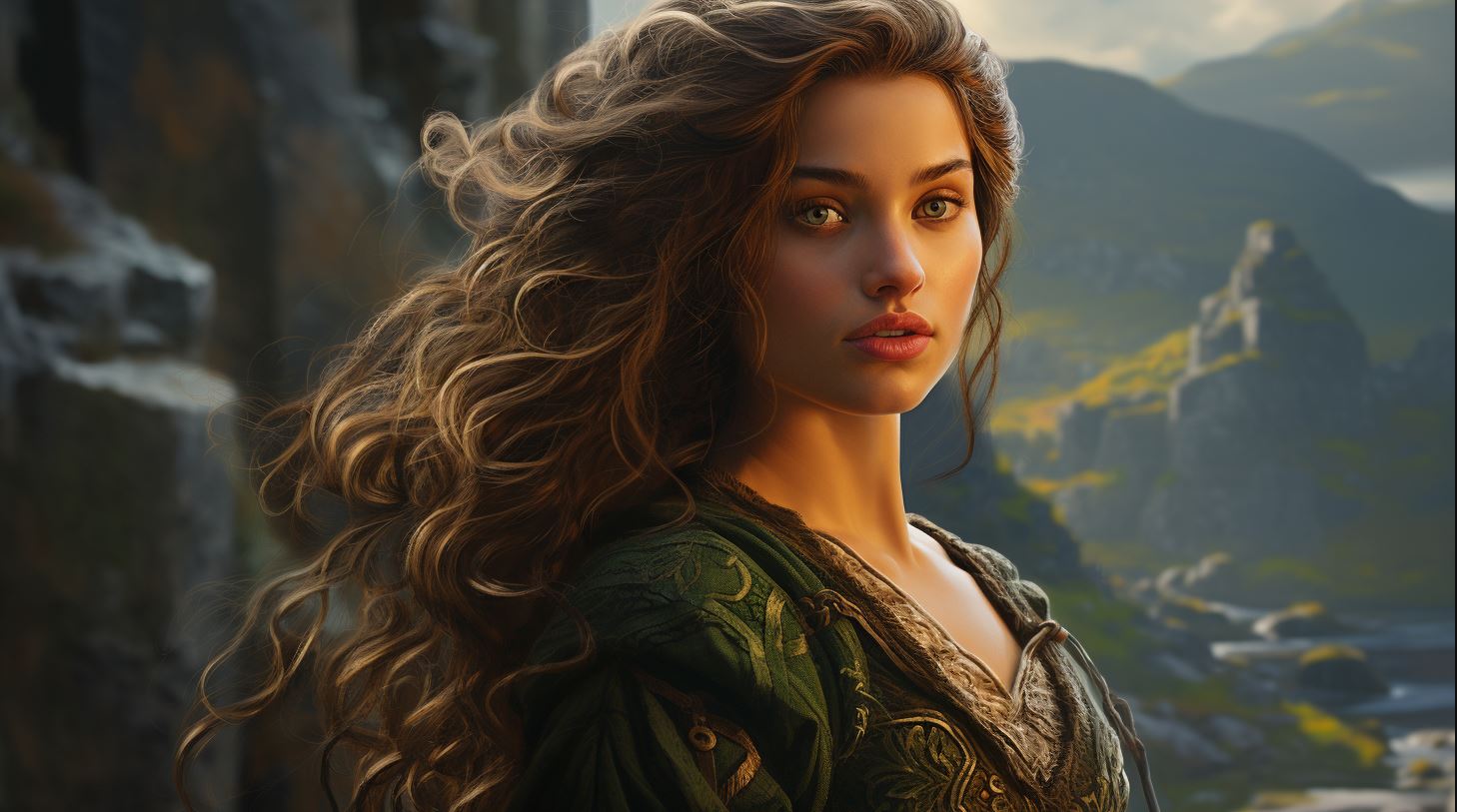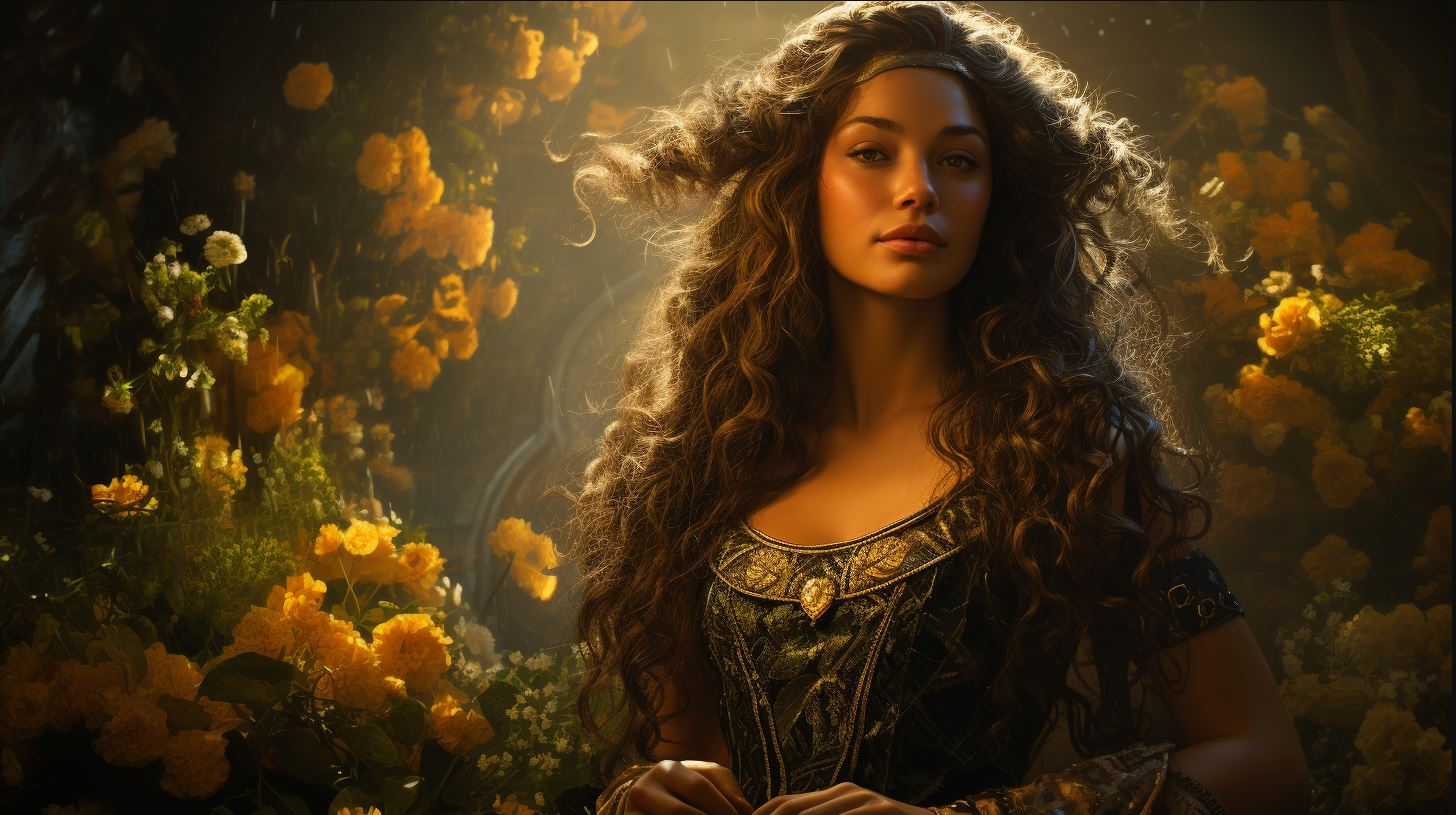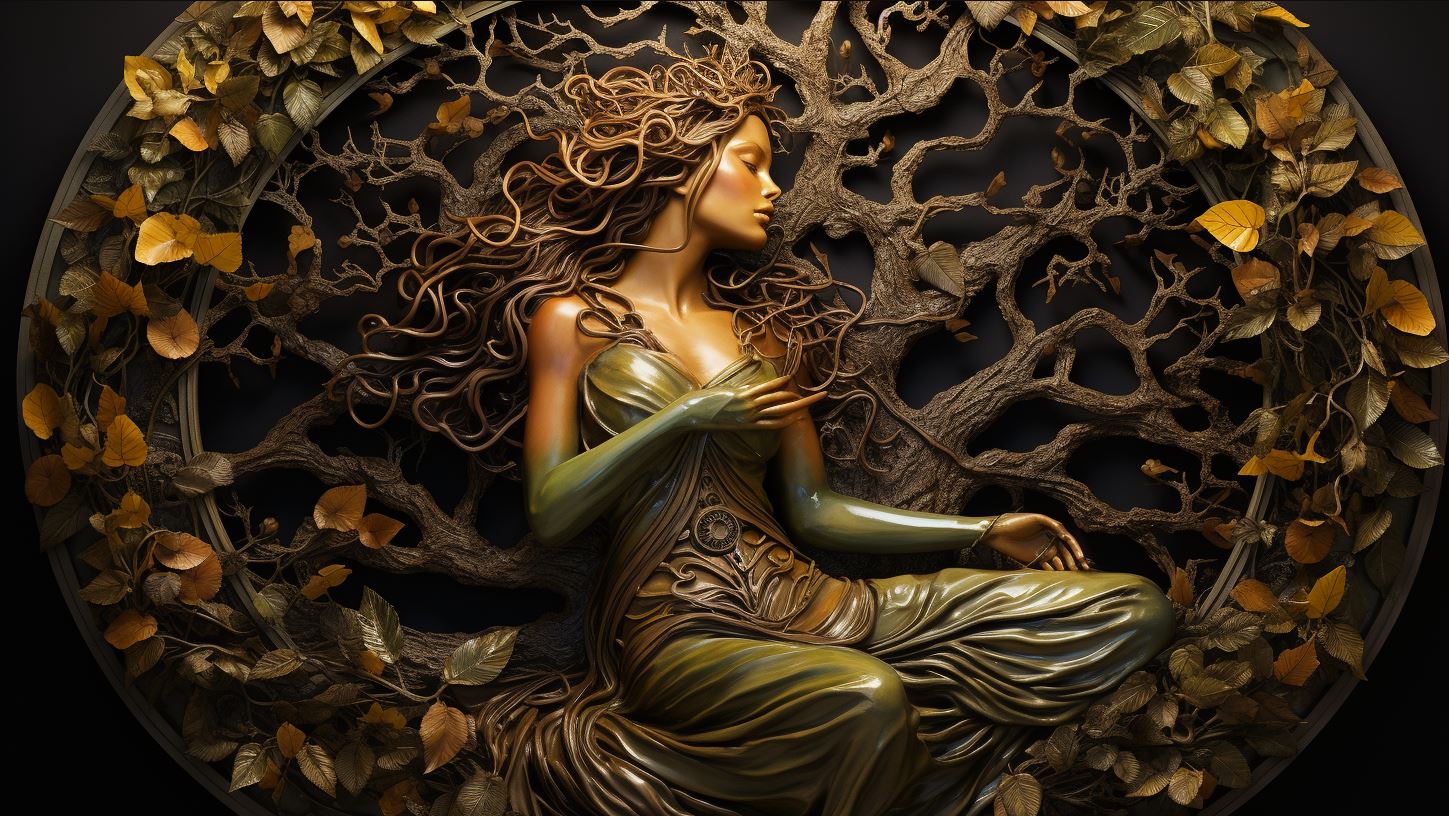Carman Celtic Goddess: The Dark Warrior Witch of Ancient Ireland
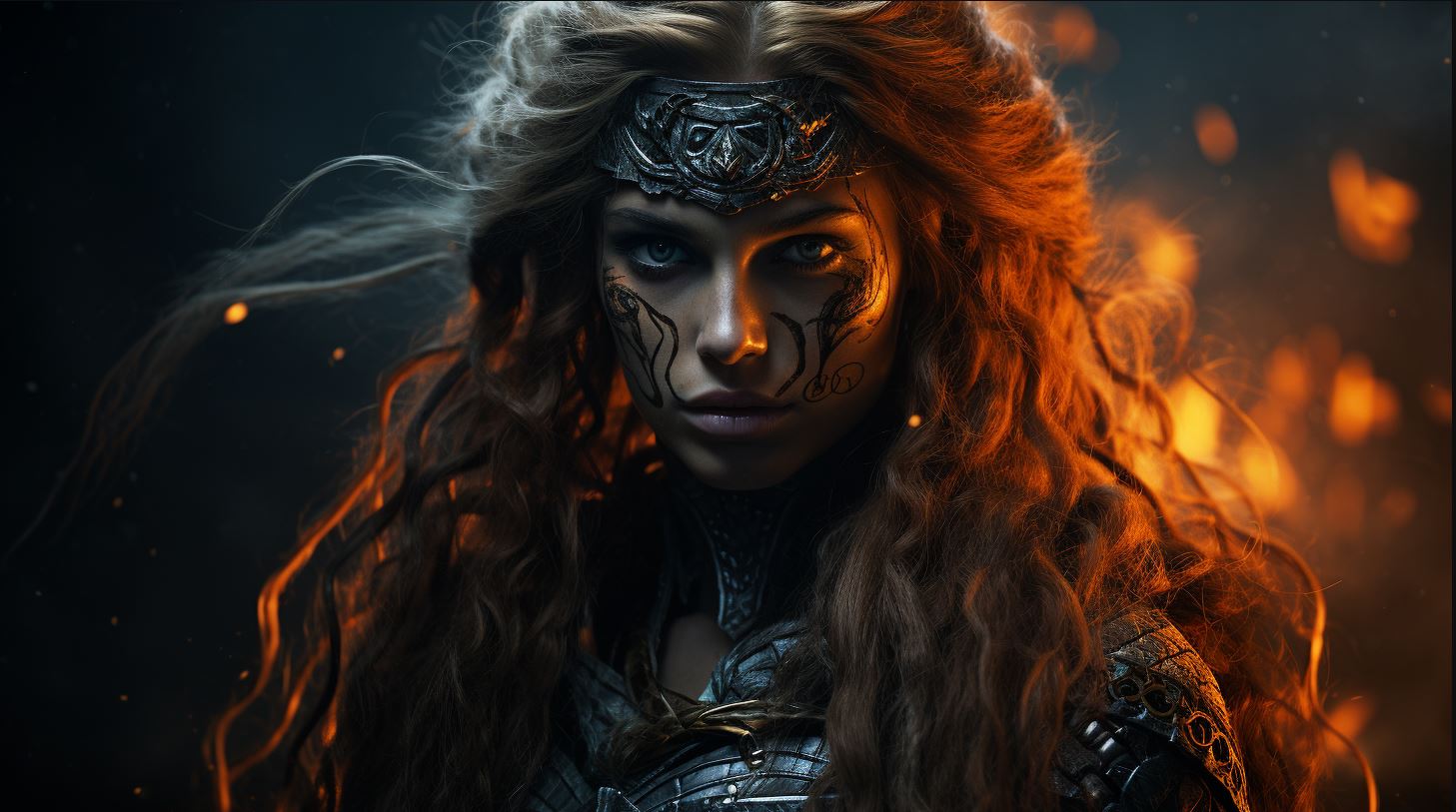
Carman Celtic Goddess was a legendary figure in ancient Ireland, known as an evil warrior witch. Along with her three sons, Dub, Dothur, and Dian, she wreaked havoc on the land, using her powerful magical abilities to devastate crops.
The Tuatha Dé Danann, the people of the goddess Danu, summoned four individuals to confront Carman and her malevolent offspring. Through their combined efforts, Carman’s sons were banished, but Carman herself proved to be a formidable adversary.
This article explores Carman’s legend, the Óenach Carman festival held in her honor, similar festivals in Ireland, and cultural references to this Celtic goddess.
The Legend of Carman Celtic Goddess
Carman Celtic Goddess is a prominent figure in the ancient myths and legends of Ireland. Revered as a powerful and malevolent witch, Carman was feared for her destructive abilities and her notorious reputation as a warrior.
Her story is intertwined with the mystical world of magic and conflict in ancient Ireland.
Carman: The Evil Warrior Witch
Carman, the central character of this legend, was known throughout ancient Ireland as a wicked and formidable witch. She possessed dark powers that allowed her to wreak havoc on the land, particularly targeting the crops that sustained the people.
Carman’s maleficent nature made her a figure of both fear and awe among the ancient Irish.
Carman’s Sons: Dub, Dothur, and Dian
Accompanying Carman on her destructive path were her three equally menacing sons: Dub, Dothur, and Dian. These formidable warriors shared their mother’s malevolent powers and participated in the invasion of Ireland.
Together, they unleashed chaos and devastation, causing great concern among the Tuatha Dé Danann, a pre-Celtic mythological people of Ireland.
The Confrontation: Tuatha Dé Danann vs Carman
The legend of Carman Celtic Goddess reached its climax with the epic confrontation between the Tuatha Dé Danann and Carman, the evil warrior witch. The Tuatha Dé Danann, the people of the goddess Danu, called forth four powerful individuals to face the formidable Carman and her wicked sons.
This intense clash of magic and might became a pivotal moment in Irish mythology.
The Four Members Summoned
The Tuatha Dé Danann carefully selected four extraordinary beings to combat the malevolent forces of Carman and her sons. Among them was Ai Mac Ollamain, the god of poetry renowned for his eloquent words and cunning intellect.
Bé Chuille, a masterful white sorceress whose enchantments could rival Carman’s dark magic, stood as a formidable ally. Cridhinbheal, a skilled satirist capable of exposing vulnerabilities through humor and wit, added a unique dimension to the group.
Lastly, Lugh Laebach, a master magician and skilled warrior, brought unparalleled strength and strategy to the battle.
The Banishment of Carman’s Sons
Though Carman’s sons, Dub, Dothur, and Dian, wreaked havoc with their magical powers, they were eventually banished from Ireland. The combined strength and wit of the four members summoned by the Tuatha Dé Danann proved too formidable for the sons to overcome.
Through their bravery and mastery of their respective domains, the threat posed by Carman’s sons was eliminated, bringing relief to the land.
The Imprisonment of Carman
Carman, however, was a formidable opponent who pushed the Tuatha Dé Danann to their limits. It was the enchantress Bé Chuille who ultimately managed to subdue Carman’s magic, trapping her in an unbreakable prison.
Carman’s reign of terror came to an end, but her dark legacy continued to linger in the ancient tales of Ireland.
The Óenach Carman: A Tribute to the Goddess
The Óenach Carman is a significant celebration that pays homage to the powerful Celtic Goddess, Carman. This ancient festival holds deep roots in Irish folklore and mythology, symbolizing the connection between the spiritual realm and the earthly realm.
It is a time when the Irish people come together to honor their cultural heritage, express gratitude for bountiful harvests, and seek blessings for the future.
Origin and Significance of the Óenach Carman
The Óenach Carman traces its origins back to the legend of Carman Celtic Goddess and the events that unfolded during her conquest of Ireland.
After Carman’s defeat and imprisonment, a tradition began to honor her memory and appease her spirit. The festival was established as a way to ensure prosperity, ward off misfortune, and maintain harmony with the divine forces governing the land.
The Óenach Carman holds a special place in Irish culture as it represents the deep reverence for the spiritual and mystical aspects of life. It serves as a reminder of the interconnectedness between humans and the spiritual entities that shape their destinies.
This celebration not only commemorates Carman but also signifies the importance of preserving ancient traditions and customs that have shaped Ireland’s rich heritage.
Festivities and Rituals at the Óenach Carman
The Óenach Carman is a vibrant and joyous gathering marked by various festivities and rituals. The festival takes place every three years during the Lughnasadh harvest festival in August. People from all over Ireland flock to the designated sacred grounds to partake in the celebrations.
During the Óenach Carman, attendees engage in tribal business affairs, showcasing their livestock, competing in athletic contests, and participating in traditional music and dance performances. These activities create a lively atmosphere filled with laughter, camaraderie, and a deep sense of cultural pride.
Rituals play a significant role in the festivities, as they are believed to invoke the blessings and protection of Carman Celtic Goddess. Ceremonial offerings, such as the lighting of sacred fires and the recitation of ancient chants and prayers, are performed to establish a spiritual connection with the divine realm.
These rituals serve as a conduit between the mortal realm and the realm of the goddess, fostering a sense of spiritual harmony and prosperity.
Importance of the Óenach Carman for Ireland
The Óenach Carman holds immense importance for Ireland, both culturally and economically.
Beyond its spiritual significance, the festival plays a crucial role in fostering community bonds, preserving heritage, and boosting local economies.
By bringing together people from different regions, the Óenach Carman strengthens the sense of national unity and pride.
It serves as a platform for showcasing Irish talents, whether in arts, sports, or trade. This creates opportunities for local artisans, musicians, and businesses to thrive, contributing to the overall prosperity of the community.
Furthermore, the Óenach Carman acts as a symbol of the resilience and continuity of Irish traditions. It signifies the unwavering commitment of the Irish people to honor their ancestral roots and ensure a prosperous future for generations to come.
- Deep-rooted celebration honoring Carman Celtic Goddess
- Traces back to ancient Irish folklore and mythology
- Symbolizes spiritual connection and earthly realm
- Originated to appease the spirit of the imprisoned Carman
- Represents reverence for spiritual and mystical aspects of life
- Held every three years during Lughnasadh harvest festival
- Tribal business, livestock exhibitions, athletic contests
- Traditional music, dance performances, and cultural pride
- Rituals to invoke blessings and protection of Carman
- Significance in fostering community bonds and preserving heritage
- Economic impact through boosting local economies
- Symbolizes resilience and continuity of Irish traditions
Similar Festivals in Ireland
Tailten, Tlachtga, Uisnech, and Raigne
Alongside the Óenach Carman festival, several other similar festivals were celebrated throughout Ireland. These festivals, namely Tailten, Tlachtga, Uisnech, and Raigne, held their own unique significance in Irish culture.
1. Tailten: Tailten was a grand assembly held in County Meath, where people from all over Ireland gathered to participate in various activities.
It encompassed not only sports competitions and musical performances but also political discussions and matchmaking events. Tailten was considered a vital meeting point for trade, diplomacy, and community cohesion.
2. Tlachtga: Tlachtga, located in County Meath, was associated with powerful druidic rituals and the lighting of the great fire.
This festival honored the goddess Tlachtga and was believed to safeguard against negative energies and bring prosperity and abundance to the land. The lighting of the fire symbolized purification and the renewal of life.
3. Uisnech: Uisnech, situated in County Westmeath, was a sacred site and a significant gathering place during ancient times. The festival celebrated at Uisnech attracted people from all over Ireland to engage in religious ceremonies, communal celebrations, and trading activities.
It served as a focal point for spiritual rituals and the veneration of ancestral traditions.
4. Raigne: Raigne, situated in County Kerry, was a festive gathering characterized by storytelling, music, and dancing.
People would come together to share tales of heroes and legends, accompanied by lively tunes and energetic dances. Raigne was an occasion for communal bonding, cultural preservation, and the transmission of oral history.
These festivals enriched Irish society by fostering connections, preserving traditions, and promoting unity among diverse communities across the country. Each festival had its own distinctive customs, but all shared a common goal of enhancing cultural identity and social cohesion.
Cultural References to Carman Celtic Goddess
In Irish culture, Carman Celtic Goddess has left a lasting impact, resonating through various mediums and art forms. From famous personalities to music bands, films, and works of art, Carman’s influence is evident.
Personalities in Irish Culture
Irish culture boasts several talented individuals who have made significant contributions. Actors such as Aidan Gillen, Sinéad Cusack, Maureen O’Sullivan, and Fionnula Flanagan have graced the stage and screen with their remarkable performances.
Their artistry brings to life the rich mythology and legends, including the tale of Carman Celtic Goddess.
Music Bands, Films, and Works of Art
The music scene in Ireland also pays homage to Carman Celtic Goddess. The band, The Horslips, weaves together traditional and contemporary sounds, channeling the spirit of ancient Celtic legends, including Carman.
Their music brings a modern interpretation of the goddess and her mythical world.
Films and works of art have also drawn inspiration from Carman Celtic Goddess. Through visual storytelling, filmmakers and artists bring her captivating tale to life, capturing the essence of her power, legend, and significance within Celtic mythology.
Conclusion
Carman Celtic Goddess continues to be a source of fascination and inspiration in Irish culture. Through the contributions of renowned personalities, music bands, filmmakers, and artists, her legacy lives on.
This cultural reverence for Carman ensures that her story and influence endure for generations to come.
Common FAQs about Carman Celtic Goddess
In this section, we will explore some frequently asked questions about Carman Celtic Goddess:
Who was Carman Celtic Goddess?
Carman Celtic Goddess was an infamous figure in ancient Irish mythology, known as an evil warrior witch. She, along with her three sons, caused havoc and destruction with their powerful magical abilities.
Carman was a force to be reckoned with and posed a great threat to the land of Ireland.
What were the names of Carman’s sons?
Carman’s sons were named Dub, Dothur, and Dian. These three sons fought alongside their mother and were equally dangerous and powerful. However, they were eventually banished from Ireland, while Carman herself proved to be more challenging to defeat.
Who confronted Carman and her sons?
The Tuatha Dé Danann, the people of the goddess Danu, summoned four members to confront Carman and her sons. These four members were Ai Mac Ollamain, the god of poetry; Bé Chuille, a white witch; Cridhinbheal, a satirist; and Lugh Laebach, a magician.
Together, they stood against the forces of Carman and her malevolent progeny.
How was Carman imprisoned?
It was Bé Chuille who finally managed to subdue Carman’s magic and imprison her. Carman, filled with sadness and despair, ultimately met her demise in 600 B.C. She requested a fair to be held in her honor at her burial site, which gave birth to the Óenach Carman, a significant festival celebrated every three years during the Lughnasadh harvest festival in August.
What was the significance of the Óenach Carman?
The Óenach Carman was a vital tribute to Carman Celtic Goddess and played a crucial role in preventing famine in Ireland. The fair involved tribal businesses, horse racing, cattle exhibitions, sports competitions, and rituals to ensure good fortune.
Legend had it that if the Óenach Carman was not held, Ireland would face a dire famine.
Were there any similar festivals in Ireland?
Yes, besides the Óenach Carman, several other similar festivals were celebrated in Ireland. These included Tailten, Tlachtga, Uisnech, and Raigne, each with their own unique traditions and customs. These festivals were significant cultural events that brought the communities together and honored various deities or historical figures.
Are there cultural references to Carman Celtic Goddess?
Absolutely! Carman Celtic Goddess and the mythology surrounding her have left their mark on Irish culture. Personalities such as actors Aidan Gillen, Sinéad Cusack, Maureen O’Sullivan, and Fionnula Flanagan have contributed to the rich tapestry of Irish heritage.
Additionally, bands like The Horslips have drawn inspiration from Celtic mythology, and films and plays have explored themes related to Irish folklore.
That concludes our common FAQs section on Carman Celtic Goddess.
If you have any further questions, feel free to explore other sections of our article or seek additional resources for a more comprehensive understanding of this intriguing figure from Irish mythology.
.

